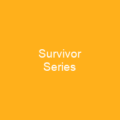Understanding the Dark Shadow of Sexual Abuse
Sexual abuse is a pervasive issue that casts a long, dark shadow over countless lives. It’s an abusive behavior using physical force or coercion, often targeting vulnerable populations such as children, the elderly, and those with developmental disabilities. But what exactly does this mean in real terms? How can something so horrific happen to people who are supposed to be protected?
The Faces of Sexual Abuse
Sexual abuse comes in many forms—child molestation, spousal sexual abuse, incest, and elder abuse. These are just the tip of the iceberg. The effects of such abuse can linger for years, manifesting as psychological trauma like shame, depression, anxiety, and even suicidal ideation. How does one begin to heal from something that feels so deeply personal and private?
Statistics Unveiled
Research reveals that 18-19% of women and 8% of men disclose childhood sexual abuse. This gender gap could be due to higher victimization rates among girls or a lower willingness for men to come forward. But why do so many victims remain silent? Are they afraid, ashamed, or simply don’t know where to turn?
High-Risk Groups
People with developmental disabilities and elderly individuals with dementia are particularly vulnerable due to their lack of understanding and increased vulnerability. In the UK alone, over 6,000 ‘safeguarding concerns and alerts’ were reported at care homes from 2013 to 2015 due to allegations of inappropriate touching and worse offenses. How can we ensure these individuals are protected?
Financial Vulnerability
People in poverty face additional risks, such as forced prostitution, live streaming sexual abuse, and other forms of molestation. These situations often go unreported due to fear or lack of resources. Is it fair that financial status can determine whether someone is safe from abuse?
The Broader Impact
Sexual abuse extends beyond human boundaries; even animals are not immune. For instance, Adélie penguins have been observed engaging in sexual abuse behaviors. This raises questions about the universality of such behavior and its impact on different species.
Power Dynamics
Sexual misconduct can occur in positions of power, such as workplaces, educational settings, and religious organizations. Cover-ups among non-abusers are common, creating a web of silence that protects abusers while victimizing others. How do we break these cycles of secrecy?
The Role of Technology
Due to social media censorship algorithms, people discussing sex and sexual assault have adopted the ‘algospeak’ code word ‘mascara.’ This term is used euphemistically to refer to a boyfriend or romantic partner in a sexual context. How does this shift in language impact our ability to discuss and address these issues?
Survivor Support
The term ‘survivor’ is now widely used to honor and empower living victims of sexual abuse or assault. This shift from victim to survivor acknowledges the strength and resilience of those who have endured such trauma. But what does it really mean to be a survivor? Is healing possible?
Prevention Programs
In the 1970s and 1980s, prevention programs were developed in the US, including child-focused programs. Web-based programs have also been created to address this issue. These initiatives aim to educate and empower individuals to recognize and report abuse. But are these programs effective enough?
Conclusion
Sexual abuse is a complex issue that affects countless lives, from the most vulnerable to those in positions of power. It’s a problem that requires our attention, understanding, and action. By working together, we can create safer environments for everyone and ensure that no one has to face this darkness alone.

You want to know more about Sexual abuse?
This page is based on the article Sexual abuse published in Wikipedia (retrieved on December 31, 2024) and was automatically summarized using artificial intelligence.





